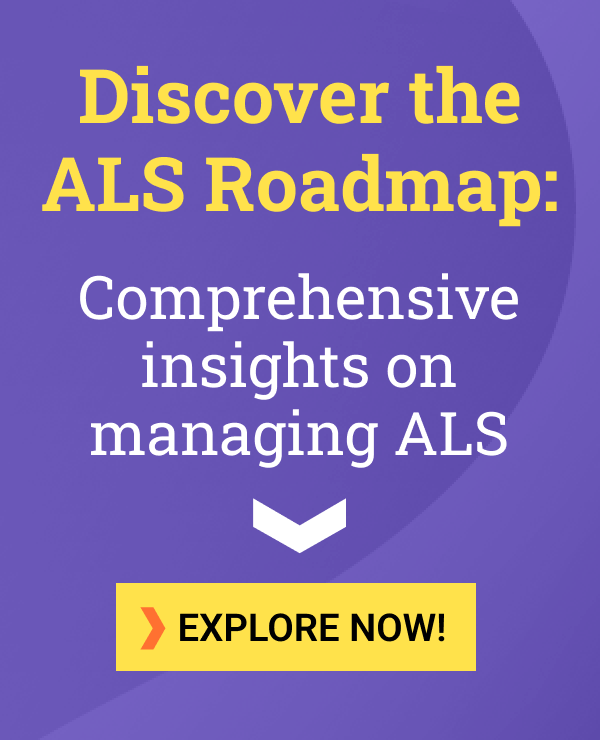AAN 2024: PrimeC found to lower nerve damage biomarker in trial
Therapy reduced blood levels of NfL, especially when given early in ALS course

NeuroSense Therapeutics’ investigational therapy PrimeC tends to reduce blood levels of neurofilament light chain (NfL), a biomarker of nerve damage, in people with amyotrophic lateral sclerosis (ALS) — especially when given earlier in the course of the disease.
That’s according to data from the PARADIGM Phase 2b trial (NCT05357950), in which the oral treatment — also found in this study to be well tolerated — was able to significantly slow disease progression among patients who adhered to the study’s protocol.
NeuroSense had previously indicated plans to launch a Phase 3 trial in 2024 should the Phase 2 findings be positive.
“We feel strongly that this is now ready to go forward to another … Phase 3 trial,” Merit E. Cudkowicz, MD, the director of the Sean M. Healey & AMG Center for ALS, said in a talk titled “PrimeC Meets Primary and Secondary Endpoints in a Phase 2b Trial.”
Cudkowicz gave the presentation at the American Academy of Neurology (AAN) 2024 Annual Meeting, held this past week in Colorado, and virtually.
PARADIGM trial tested PrimeC in patients within 2.5 years of symptom onset
PrimeC is a fixed-dose combination of two medications individually approved in the U.S. — the anti-inflammatory drug celecoxib and ciprofloxacin, an antibiotic. Together, they are thought to slow ALS progression by targeting key cellular processes implicated in the degeneration of motor nerve cells that characterizes the disease.
In PARADIGM, 68 adults with ALS were randomly assigned to receive a long-acting formulation of PrimeC or a placebo for six months, while remaining on their standard ALS therapy regimen. Treatment was given twice daily, with a total of four tablets per day.
About 90% of the participants were being treated with riluzole (e.g. Rilutek, Tiglutik) during the trial, according to Cudkowicz. All participants also were within 30 months, or 2.5 years, of ALS symptom onset.
The study’s main goals were to evaluate PrimeC’s safety and tolerability, as well as its effects on certain disease-associated biomarkers. Secondary efficacy endpoints included measures of disease progression, lung function, quality of life, and survival.
As reported late last year, top-line data showed that the therapy was tolerated well by patients, meeting one of the study’s main goals. Side effects, all of which were mild and temporary, were all “expected based on what’s known about the two drugs,” Cudkowicz said.
Across the full study population, PrimeC also led to a meaningful — although not statistically significant — 29.2% slower disease progression relative to the placebo, as assessed with the ALS Functional Rating Scale-Revised (ALSFRS-R).
Analyses that focused solely on the trial’s so-called per protocol population — the 62 people who complied with the trial’s initial rules — indicated that PrimeC was associated with a significant, 37.4% reduction in functional declines compared with the placebo. A per protocol population is thought to more accurately reflect how a treatment works when used exactly as intended.
In this population, the data showed a mean difference of 3.22 ALSFRS-R points between the PrimeC and placebo groups after six months, indicating less advanced disease in the treated group.
Across both groups, benefits of PrimeC tended to be observed across ALSFRS-R subdomains, although statistical significance was only observed in the per protocol population for the respiratory domain, according to Cudkowicz.
Previous trial analyses have also indicated that PrimeC is associated with non-significant slowing of lung function declines, improved life quality, and prolonged complication-free survival.
“We saw a consistently positive effect in all clinical outcomes,” said Cudkowicz, who also is chief of the department of neurology at Massachusetts General Hospital, and professor of neurology at Harvard Medical School.
New data analyses focus on blood biomarker levels over study’s course
Blood levels of NfL were evaluated in an exploratory manner. Across the entire study population, PrimeC was associated with a small, 4.3% reduction in NfL levels after six months relative to the placebo, without statistical significance.
The reductions in NfL were greatest in patients who were earlier in the disease course, and grew increasingly smaller with longer ALS duration. Individuals within nine months of symptom onset experienced an average 29.1% NfL drop relative to the placebo. That compared with an average decline of 17.1% for patients within a year of symptom onset, and 5.1% for those within 1.5 years. An average decline of 3.6% was seen for patients within two years of the start of symptoms.
“What we can learn from this is that, particularly in the people who started the drug earlier in their illness, that’s where we saw the largest difference,” Cudkowicz said, noting “this is still a work in progress.”
Analyses of additional biomarkers — one of the study’s main outcome measures — are ongoing, with results expected in the coming months.
What we can learn from this is that, particularly in the people who started the drug earlier in their illness, that’s where we saw the largest difference.
After the main trial, participants were enrolled in an ongoing open-label extension study, where all are receiving PrimeC.
“We’re very thankful for the trial participants, their family, and caregivers for being part of the study and all the site investigators and their coordinators … that enrolled these patients,“ Cudkowicz concluded.









